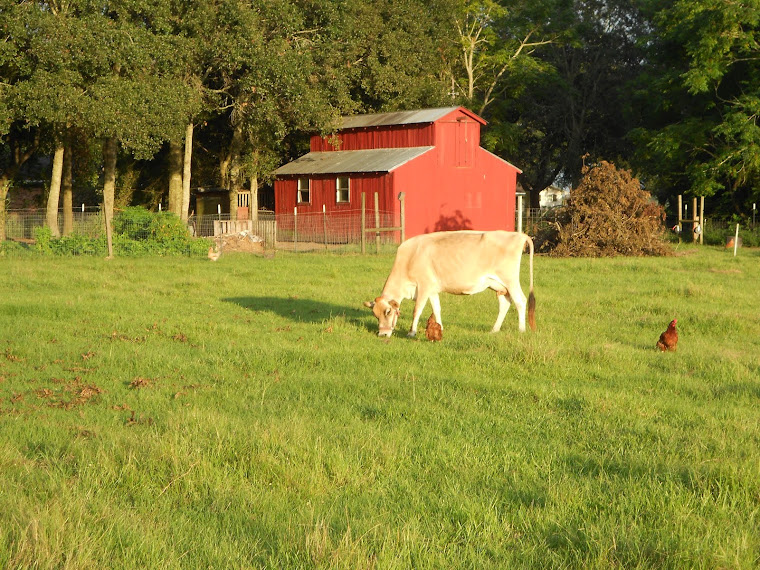Once we transferred the boxes to the honey house, the work of extracting the honey begins. Our friend from the bee club has an air conditioned honey house and some expensive equipment. We are a small operation and haven't invested in extraction equipment. Fortunately, we have friends in our bee club that generously allow us to use their equipment until we get our feet on the ground.
So here is a medium frame of capped honey. All of those cells have a layer of white wax that encapsulates the honey inside. In order to extract the honey, you must uncap it.
There are several methods to do this: Heated knives, fish-filleting knives, bread knives, and what we call "a scratcher." We used all three. You stand the frame up sideways over a stainless steel table and begin cutting the wax cap off of both sides to expose the honey for extraction.
The uncapped frames are then placed in slots on the table. The table has a screen at the bottom that catches all the wax cappings. The honey that drips out of the frames or out of the cappings flows beneath the screen into a basin below. There is a honey gate at the bottom that allows you to capture all the honey.
Here is a close-up of an un-capped frame of honey. Sticky. Sweet. Delicious!
The extractor holds 18 frames. I think this one costs $1,800. The frames are set, one by one in the extractor. The folks at the uncapping table just keep on working and lining up the uncapped frames in the table. The folks on the extractor spin the honey and continue pulling uncapped frames from the table. Believe it or not, it doesn't take that long.
Last year the extractor we used was a hand crank extractor. We thought it was nice and it was. This one is a Cadillac. It has an electric motor and is gear driven and digital. You can spin it at different speeds. As you spin, the honey gate is opened on the bottom and the extracted honey flows through a screen into a food grade five gallon bucket.
The screen catches wax and any other impurities or bees that got into the honey.
We repeated that process until we had extracted all the honey from the boxes. We're not done yet! Stay tuned for Part 4.

No comments:
Post a Comment